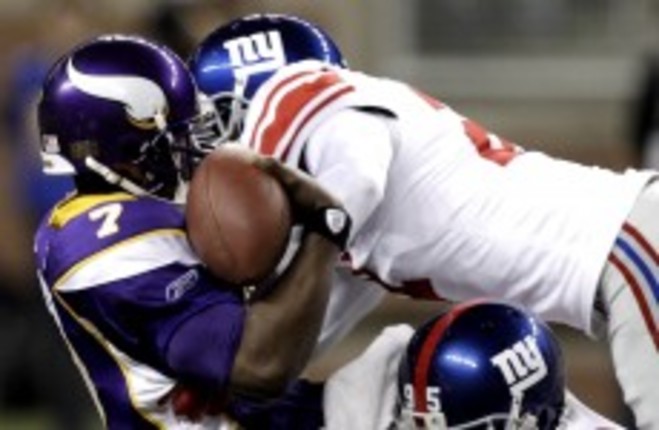ED PILKINGTON HAS contributed a feature to the Guardian on the debilitating side-effects of a career spent at the NFL’s line of scrimmage.
As the neurological origins of mental illness and physical dysfunction become more easily identifiable, a steadily increasing number of NFL veterans are beginning to trace their own, previously inexplicable, difficulties to injuries suffered on the field of play.
Severe, often suicidal, depression; tremors; irritability; memory loss; mood swings: the symptoms conform to those of CTE (Chronic Traumatic Encephalopathy), a condition historically associated with boxers.
So pressing are the concerns of many veterans of the sport that they’ve banded together with the staff of Bedford VA Medical Center in Massachusetts to form the Center for the Study of Traumatic Encephalopathy. The centre is already in possession of over 400 brains, many exhibiting a unusual level of deterioration.
Pilkington observes neurologist and CTE expert Dr Ann McKee carry out a routine examination. The picture she paints of the sport’s lasting effects is a grim one:
“McKee takes a deep look at the cross-section of this brain and momentarily appears sad. ‘This is a brain at the end-stage of disease,’ she says. ‘I would assume that with this amount of damage the person was very cognitively impaired. I would assume they were demented, had substantial problems with their speech and gait, that this person was Parkinsonian, was slow to speak and walk, if he could walk at all.’Without being melodramatic about it, I say, you are holding in your hands an example of the price that is paid for being a professional footballer at the top of his game.
She hesitates a second. ‘At least in this case, yes,’ she says.
As thought-provoking as Pilkington’s piece is, it was anticipated and to a great extent expanded upon by Malcolm Gladwell in a feature written for the New Yorker in 2009.
Weaving together short biographies of some of the NFL’s most troubled veterans with an account of Science’s bid to offer a concrete basis for a reform of NFL safety policy, Gladwell gives shape to a deeply unsettling narrative:
“The other major researcher looking at athletes and C.T.E. is the neuropathologist Bennet Omalu. He diagnosed the first known case of C.T.E. in an ex-N.F.L. player back in September of 2002…‘There is something wrong with this group as a cohort,’ Omalu says. ‘They forget things. They have slurred speech. I have had an N.F.L. player come up to me at a funeral and tell me he can’t find his way home. I have wives who call me and say, ‘My husband was a very good man. Now he drinks all the time. I don’t know why his behavior changed.’ I have wives call me and say, ‘My husband was a nice guy. Now he’s getting abusive.’ I had someone call me and say, ‘My husband went back to law school after football and became a lawyer. Now he can’t do his job. People are suing him.’”

